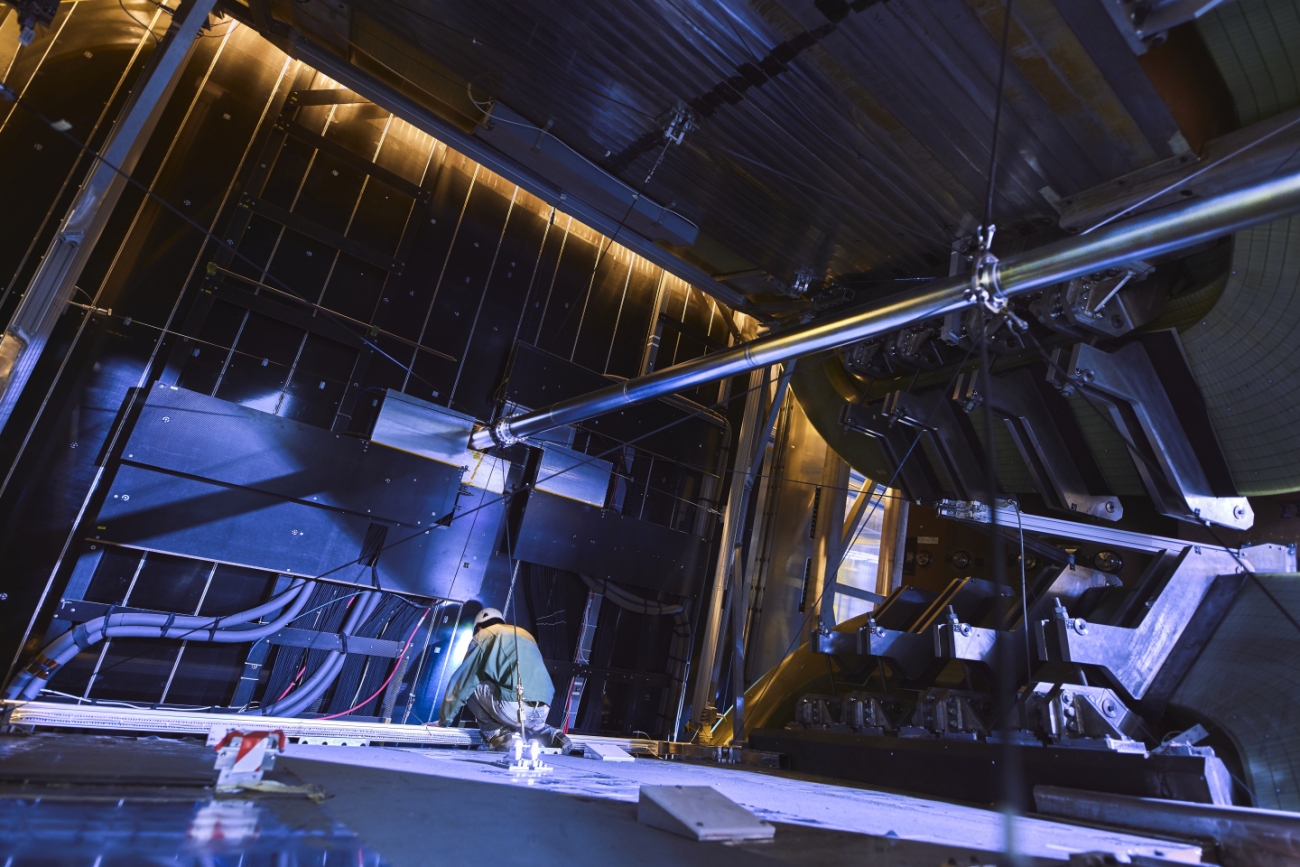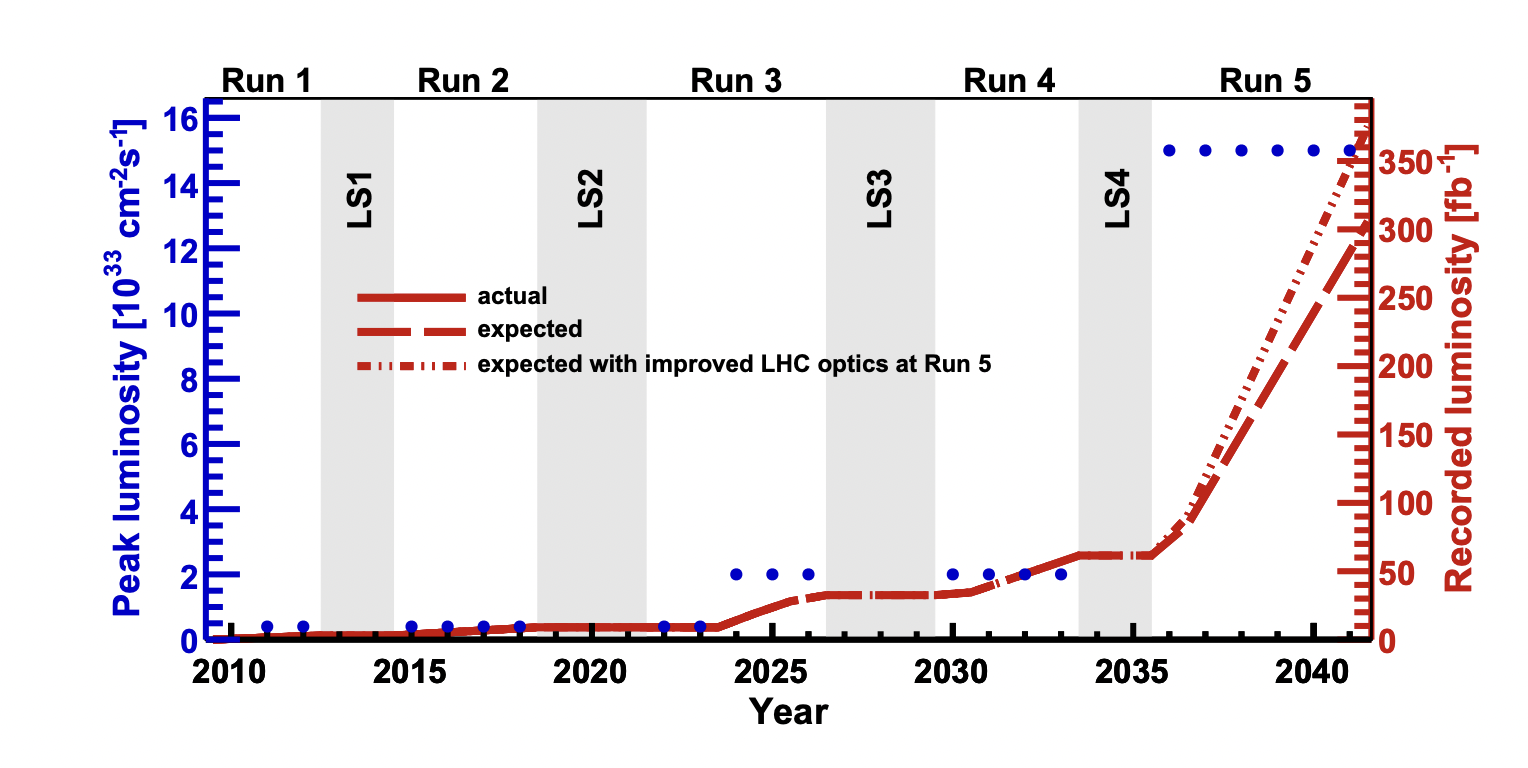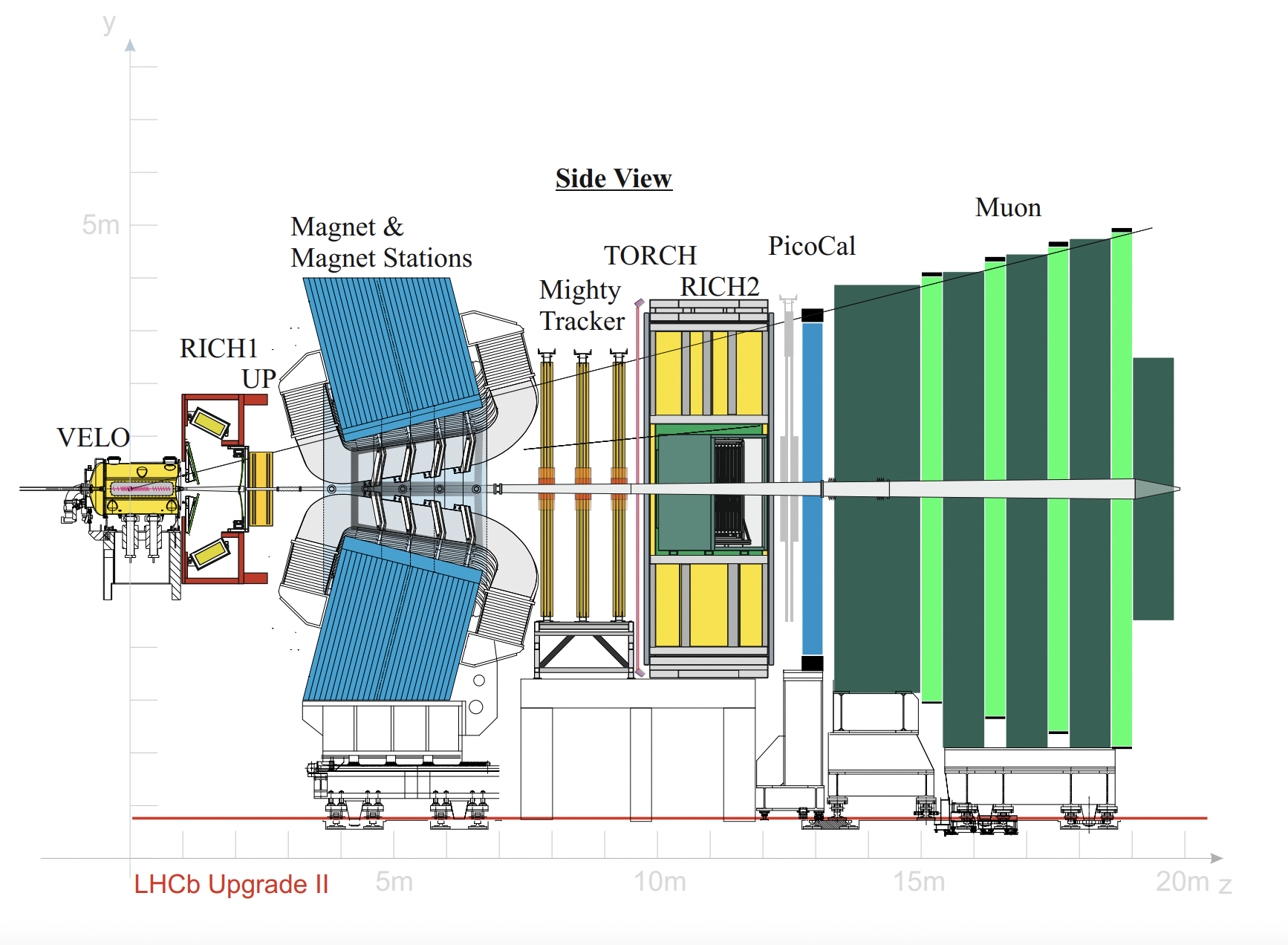LHCb Upgrade II Scoping Document

CERN Research Board backs “Middle” scope for LHCb Upgrade II
With the CERN Research Board’s endorsement on 14 April 2025, the LHCb Upgrade II Scoping Document has cleared its critical design-scope review, moving the project from proposal to implementation. The Board’s recommendation that the collaboration pursue the Middle configuration—one of three options studied in the Scoping Document—frames the detector that will be installed during Long Shutdown 4 (LS4) and run deep into the High-Luminosity LHC era.
When Run 4 ends, the present Upgrade I spectrometer will have gathered its design 50 fb⁻¹. High-luminosity running promises an order-of-magnitude leap in instantaneous luminosity, enabling a sample of roughly 300 fb⁻¹ that can probe CP-violating phases, lepton-universality tests ultra-rare decays and much more. To thrive in such conditions, every sub-detector must embrace time-stamping or finer granularity, and radiation-hard technology.

Figure 1: Instantaneous (peak) and integrated (recorded) luminosity profiles for the original LHCb (Runs 1 and 2), Upgrade I (Runs 3 and 4) and Upgrade II (Run 5) detectors, in the context of the LHC and HL-LHC schedule.
The Scoping Document revisits the 2022 Framework TDR “Baseline” and adds two leaner variants. Middle trims the levelled peak luminosity from 1.5 × 10³⁴ to 1.0 × 10³⁴ cm⁻² s⁻¹, an adjustment that cuts detector occupancies and real-time data throughput by about 30% without seriously eroding physics reach. Simulations still project a 0.30° determination of the CKM angle γ and a ≈13 % precision on the ultra-rare-decay ratio B(B⁰ → µ⁺µ⁻)/B(B⁰ₛ → µ⁺µ⁻) once 300 fb⁻¹ are recorded. In other words, a modest relaxation of granularity, cooling, and readout requirements yields steadier operation and a healthier safety margin in computing power, all while maintaining flagship sensitivities essentially intact.
A detector built in four dimensions
Handling forty proton–proton collisions per bunch crossing in the crowded forward acceptance of the spectrometer demands “4-D” tracking: every hit is tagged in space and in time. The new Vertex Locator (VELO) will sit at 7.2 mm from the beamline; its 32 pixel stations combine ten-micron spatial resolution with a 50 ps hit time stamp that helps discriminate pile-up vertices. Four planes of Upstream Pixel (UP) silicon — reduced outer acceptance notwithstanding — seed track-finding and slash ghost rates. Downstream, the Mighty-Tracker marries six layers of pixel DMAPS with twelve scintillating-fibre stations so that momentum resolution and radiation hardness survive the luminosity leap. Additional Magnet Stations mounted on the inner walls of the dipole catch the soft, low-momentum tracks that would otherwise vanish into iron, sharpening key channels such as D*⁺ → D⁰ π⁺ .
Particle identification likewise graduates to the fast-timing era. Refurbished RICH optics swap vacuum-tube photomultipliers for silicon-photomultiplier (SiPM) arrays whose pixel size increases gently from 1.4 mm to 2 mm as occupancy falls with radius; in the middle the high-flux zone shrinks to one-quarter of the vessel area. TORCH, a time-of-flight wall of quartz plates and micro-channel-plate sensors, delivers 15 ps per track below 10 GeV/c yet is shortened in the middle to save channels while still covering three-quarters of the acceptance. Electromagnetic calorimetry evolves into PicoCal: high-granularity SpaCal modules closer to the beam, upgraded Shashlik blocks outside, and refurbished Upgrade I modules at the periphery. Together, these changes hold per-channel occupancies below 20% and preserve the π⁰ and e/π separation that underpin radiative and electroweak studies. Muon identification follows suit with refreshed gas shielding and electronics that keep mis-ID losses under 20 % even in the lowest-pᵀ bin.
Simulated datasets confirm that even the leaner Middle detector reaches all benchmark goals: γ at 0.30°, AΓ in charm at 1.2 × 10⁻⁵, and the B(B⁰ → µ⁺µ⁻)/B(B⁰ₛ → µ⁺µ⁻) ratio near 13 % precision. Time-stamped tracking and TORCH timing preserve hadron-spectroscopy reach and sustain searches for long-lived exotica. ATLAS and CMS will remain statistics-limited for many flavour observables, while Belle II’s larger acceptance cannot compensate for LHCb’s enormous forward hadron yield, leaving Upgrade II as the reference facility for flavour physics well into the 2040s.
It should also be noted that LHCb has worked closely with the accelerator division to ensure its demands fit the global running envelope. As the LHC beam is shared with the other experiments, the Upgrade II must not compromise anyone else's programme. Studies show that levelling at 1.0 × 10³⁴ cm⁻² s⁻¹ barely dents the other experiments’ integrated luminosity and, thanks to a novel “flat-optics” scheme, can even extend the time a single fill spends at top conditions, delivering steadier data-taking and a useful cushion should the HL-LHC fall short of its design beam parameters. Although dynamic-aperture tests are still pending, the optics work underlines a key message of the Scoping Document: Upgrade II is compatible with—and in some cases benefits—the HL-LHC machine plan.

Figure 2: Schematic side-view of the Upgrade II baseline detector. The x-direction is defined to form a right-handed coordinate set, together with y (pointing vertically upwards) and z pointing along the beamline in the direction from the VELO to the Muon detector.
Schedule and resources
Every sub-detector aims to deliver its Technical Design Report by the end of 2026; mass production starts in early 2027. The draft construction schedule gathers all components on site by mid-2032. LS4, expected to run from late 2033 to Easter 2036, leaves an 18-month window for dismantling the current apparatus and installing its successor, considering also some months of dry-run commissioning before the start of collisions. A master plan, described in the submitted report, sequences parallel work upstream and downstream of the magnet and finishes with six months of beam-free global commissioning ahead of Run 5.
Person-power estimates peak at 260–330 full-time equivalents, including a maximum of about 90 physicists in 2029; expressions of interest from the institutes already match that load. Identified schedule-critical risks — ASIC fabrication cycles, large-area timing-sensor yields, scintillating-fibre radiation limits — are covered by prototypes and beam tests planned for 2025.

Figure 3: Main phases of the Upgrade II project, in the context of the official LHC schedule, as of early 2025
From scope approval to construction
With scope fixed, subsystem consortia are finalising ASIC choices and large-area sensor R&D. Formal funding reviews follow later this year; timely commitments remain vital because custom ASIC cycles sit near the critical path to installation.
In the 2030s no other facility can match Upgrade II’s breadth which is poised to define flavour-physics precision well into the 2040s.
Hardware prototypes move next, with production contracts expected soon after the 2026 TDR milestone. If the collaboration holds schedule, a rejuvenated, time-stamped spectrometer will greet the first high-luminosity collisions in spring 2036—ready to dissect nature’s flavour puzzle with unprecedented acuity.
Read more in the LHCb’s Scoping Document.
